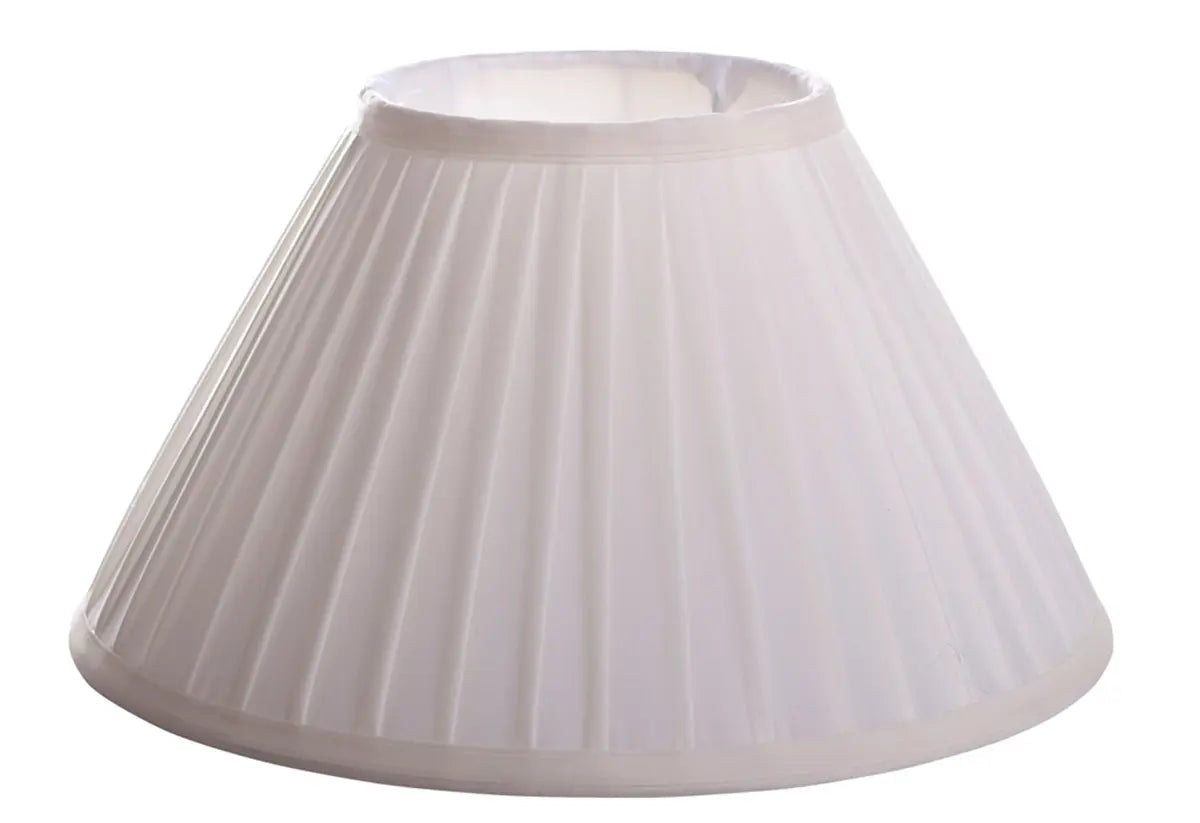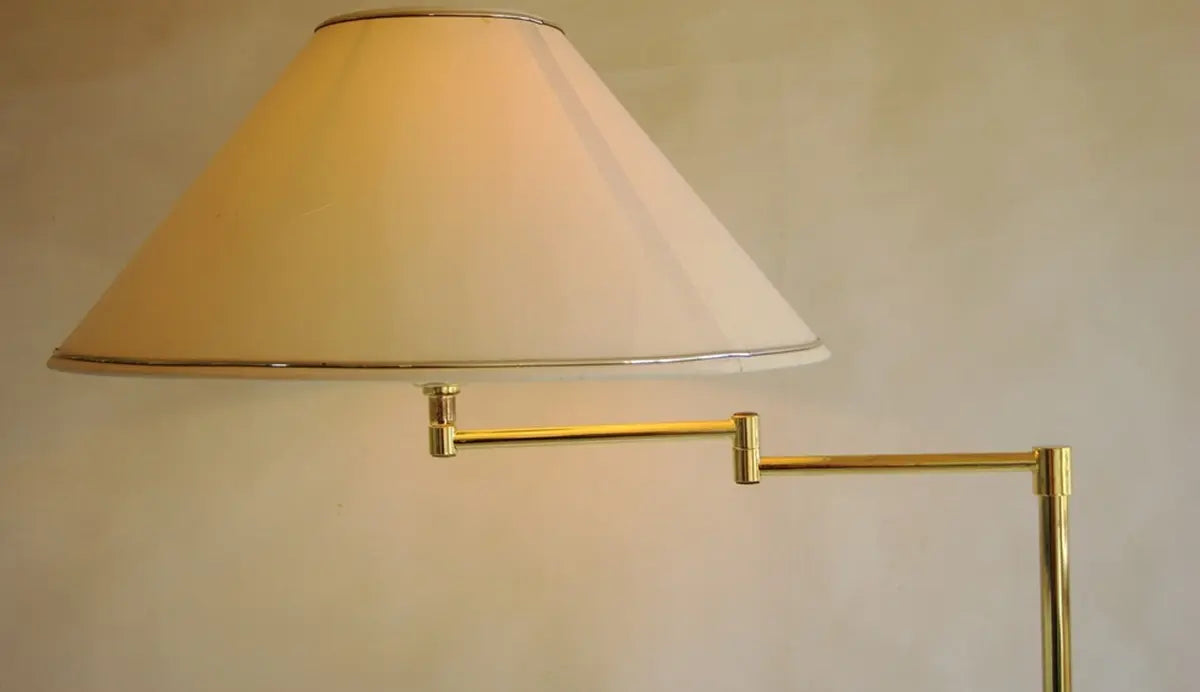Tired of your beloved floor lamp tilting like it's had one too many?
This common dilemma not only disrupts the symmetry of your space but can lead to a premature "lights out" for your lamp. Fear not!
We're diving into the nuts and bolts of how to fix your leaning floor lamp.
Let's dive in.
Key Takeaways
- Identify the Cause: Determine if it's a loose base, bent pole, uneven flooring, or damaged parts causing the lean.
- Fix a Loose Base: Tighten all screws and bolts; use adhesive or PTFE tape for extra grip.
- Straighten a Bent Pole: Gently bend back into place; seek professional help for severe bends.
- Adjust for Uneven Flooring: Use shims or felt pads under the base to level the lamp.
- Replace Warped or Damaged Parts: Identify and swap out faulty components.
Common causes of a leaning floor lamp
Let's dive into the common culprits:
Loose Base
Often, the instability of a lamp starts from its foundation. Regular use or movement can loosen the base's fasteners, leading to a tilt. Checking and tightening these can sometimes be all that's needed.
Bent Pole
A direct hit or drop can cause the lamp's pole to bend. This misalignment, even if slight, will make the lamp lean. Inspect the pole for any bends or curves that shouldn't be there.
Uneven Flooring
It might not always be the lamp at fault. Uneven floors can create the illusion of a lean. Using a level tool can help identify if the floor, rather than the lamp, needs attention.
Warped or Damaged Parts
Time and the quality of materials can lead to warping or damage, affecting the lamp's integrity. Examine your lamp for any signs of wear or damage that could be causing the lean.
Improper Assembly
A floor lamp that wasn't put together correctly from the start may eventually start to lean. Ensure all parts are correctly aligned and tightly secured to prevent any tilt.
Tools and Materials Needed
Here’s a concise guide to everything you'll need:
Tools Required
- Screwdriver: For tightening any loose screws on the lamp base or body.
- Wrench: Useful for adjusting bolts or nuts that might have loosened over time.
- Level: To check if the lamp (and floor) is perfectly horizontal.
- Rubber Mallet: Sometimes, a gentle tap is needed to realign bent metal parts without causing damage.
Materials for potential fixes
- Adhesive: Strong glue can reattach parts or reinforce weak spots.
- Washers and Spacers: To adjust and level the base or to compensate for any gaps causing the lean.
- Felt Pads: Placed under the base, they can help level the lamp and prevent slipping on uneven floors.
- PTFE (Plumber’s) Tape: Wrapped around threaded connections, it can tighten joints that have become loose.
Fixing a Loose Base on Your Leaning Floor Lamp
Step-by-Step Instructions
1. Prepare Your Workspace:
- Ensure the lamp is unplugged.
- Work on a flat, stable surface to prevent further damage.
2. Inspect the Base:
- Identify loose screws or bolts.
- Check for any visible damage that might need more than tightening.
3.Tightening the Base
- Using a screwdriver or wrench, carefully tighten all loose connections. Don’t over-tighten to avoid stripping.
- For stripped threads, wrap PTFE (plumber’s) tape around the screw’s thread to fill the gap and secure the fit.
4. Enhancing Stability
- If the threads are very damaged, using strong glue with PTFE tape can provide a long-lasting fix. Ensure you’ve test-fitted with the tape before applying glue.
- Alternatively, using a slightly larger screw can create enough friction to secure the base. However, this should be a last resort to avoid potential misalignment or aesthetic issues.
5. Replacing a Screw
If you can't tighten or replace screws, you can use a wood shim cut to the right size instead. This will replace the troublesome screw with a new solution.
Safety Tips
- Always unplug the lamp before starting any repair to avoid electrical hazards.
- Wear gloves to protect your hands from sharp edges or adhesive.
- If using glue, work in a well-ventilated area to avoid inhaling fumes.
- Ensure all adjustments are made gently to avoid further damage to the lamp or harm to yourself.
Related: How to Fix a Floor Lamp Base - An Ultimate 2025 Guide
Correcting a Lean Due to a Bent Pole
Occasionally, a floor lamp may start to lean because of a bent pole. This issue, while troublesome, isn't always irreversible. Here's how to approach it with care:
Gentle Correction
- Begin by unplugging the lamp for safety.
- Carefully assess the bend to determine its severity. Minor bends can often be gently straightened by hand. Slowly push in the opposite direction of the bend, being careful not to push too hard and make the damage worse.
Using Tools
For stubborn bends, a rubber mallet can be gently used to coax the pole back into shape. Wrap the affected area with a soft cloth to protect the finish, and lightly tap the bent section back into alignment.
Heat Application
In some cases, applying heat with a hairdryer can make the material more malleable and easier to straighten. However, this should be done with extreme caution to avoid damaging the lamp or causing injury.
Related: Step-by-Step Guide: How to Fix a Floor Lamp Pole
When to Call in the Experts
Severe Bends: If the pole has a significant bend or if DIY attempts don’t yield the desired results, it's wise to seek professional help. A skilled craftsman can often repair bends without compromising the integrity or aesthetic of the lamp.
Risk of Damage: If the lamp is important or expensive to you, it's best to consult a professional immediately. This will help prevent permanent damage.
Safety and Preservation Tips
- Always prioritize safety, both of the lamp and yourself, in any repair attempt.
- Remember, improper handling during the straightening process can lead to further damage. If in doubt, professional assessment is the best path forward.
Adjusting for Uneven Flooring
Uneven floors can make even the sturdiest floor lamps lean precariously. Here’s a straightforward approach to ensure your lamp stands tall and proud:
Shims for the Win
Thin pieces of wood, known as shims, can be slid under the lamp base to counteract uneven floor surfaces. Start with thinner shims and add thickness as needed until the lamp stands upright.
Felt Pads
Another effective solution involves sticking felt pads to the lamp's base. These pads can be layered to achieve the desired level, providing a soft and scratch-free interface between the lamp and the floor.
Replacing Warped or Damaged Parts
Safety First
Always disconnect the lamp from any power source before starting repairs.
Detecting Wear and Tear
Periodically inspect your lamp for any signs of warping or damage. Focus on the base, pole, and any connectors for abnormalities. Signs to look out for include noticeable bends, cracks, or parts that no longer fit snugly together.
Sourcing Replacement Parts
Manufacturer’s Website: Many lamp manufacturers offer replacement parts directly from their website. This ensures you get the correct component that’s designed for your specific model.
Local Hardware Stores: For more generic parts like screws, washers, or felt pads, a trip to your local hardware store might suffice. Bring the damaged part along to ensure a perfect match.
Specialty Lighting Stores: For unique or decorative parts, consider consulting a specialty lighting store. Their expertise can be invaluable in finding a compatible replacement or offering custom solutions.
Repairing a leaning floor lamp requires attention to detail and patience. If you find the process too challenging, or if you're thinking about an upgrade instead, browsing our selection of modern floor lamps.
How to Avoid Your Floor Lamp Leaning
Regular Maintenance Checks
Like any piece of furniture, your floor lamp benefits from a little TLC. Schedule monthly checks to tighten any loose screws or bolts, ensuring all parts are snugly fitted together. This can prevent gradual loosening that might lead to a tilt.
Proper Positioning
Where you place your lamp can significantly impact its longevity and stability. Avoid areas prone to bumps or where it might be easily knocked over. Near seating areas or out of high traffic paths is usually a safe bet.
Related: Where to Put a Floor Lamp: Best Spots
Balanced Placement
Even on seemingly level floors, slight inclines can exist. Use a level to check the surface where your lamp stands. If you notice any imbalance, consider using felt pads or shims as a quick fix to level out the base.
Gentle Handling
When moving your lamp, do it gently. Lifting from the base rather than the pole can prevent undue stress on the structure, reducing the risk of bending or breaking.
Before you leave
Armed with these insights, your floor lamp need not teeter on the brink of collapse any longer.
Has this guide kindled a new perspective on your once faltering lamp?
It's time to choose the approach that aligns with your needs and budget. Curious about more ingenious lamp fixes and guides?
Illuminate your knowledge further by exploring Floor Lamp Skill, where more enlightening tips await to brighten your living spaces.
Let's turn your lighting dilemmas into radiant solutions together!
Also Checkout:
Where to Put Floor Lamp in Living Room
2025's Ultimate Guide on How to Hide Floor Lamp Cords









Leave a comment
All comments are moderated before being published.
This site is protected by hCaptcha and the hCaptcha Privacy Policy and Terms of Service apply.